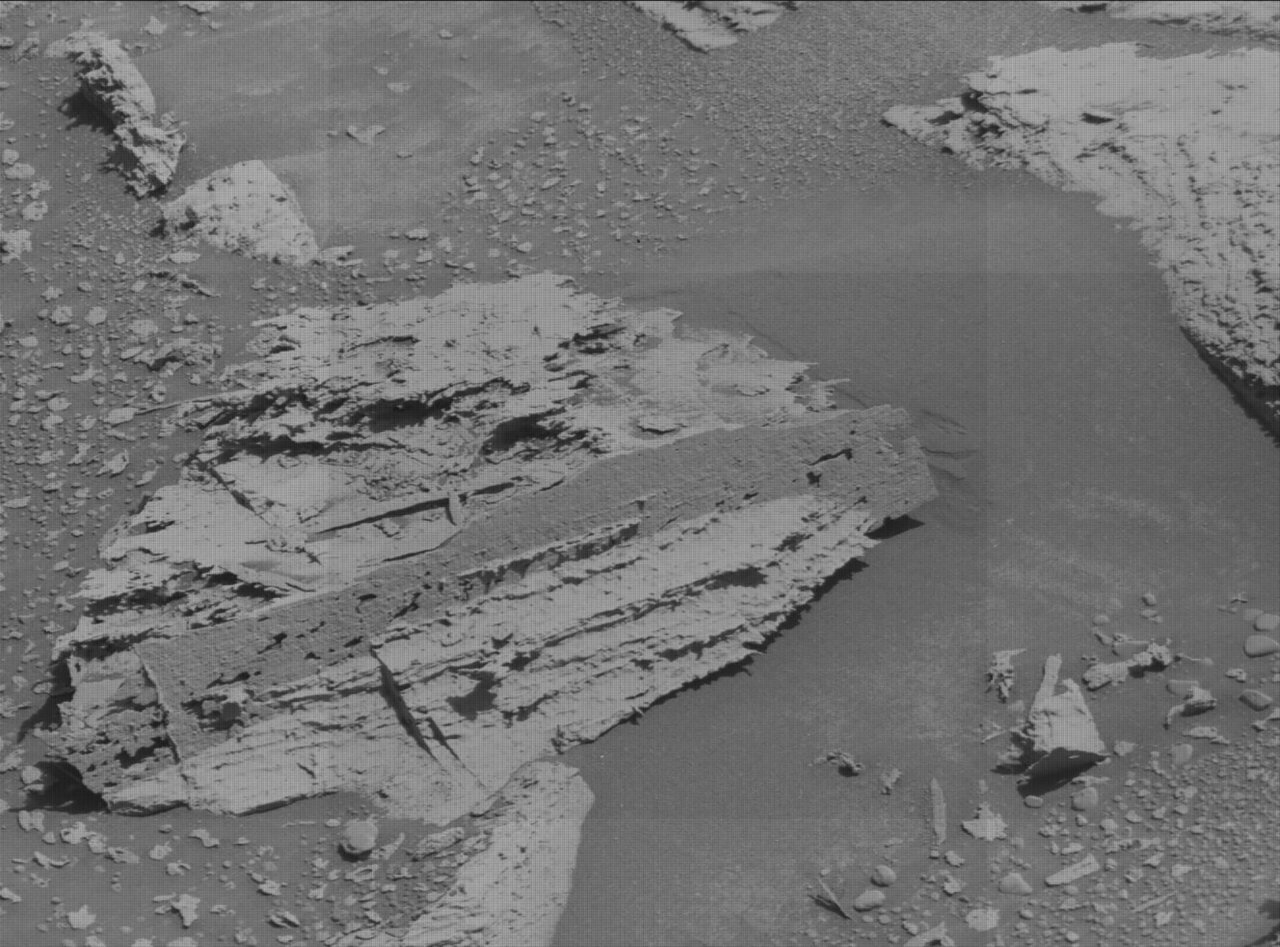4 min read

Earth planning date: Friday, October 27, 2023
The Curiosity rover team has been preparing for the start of the Solar Conjunction in November, when contact with all Mars spacecraft will be impossible for three weeks since Mars will be behind the Sun as seen from Earth. During that time, Curiosity will be following a long plan of instructions which were confirmed to have been successfully uploaded to the rover earlier this week. For now, Curiosity is finishing up its Sequoia drill campaign. A top science priority for the sol 3991 to 3993 weekend plan is for the CheMin instrument to dump its sample on sol 3991. Fine rock powder will leave the sampling tube more cleanly now than if we wait until after the conjunction when it might have adhered to the glass during the many temperature cycles in the intervening weeks. The team would like to reuse this tube. In addition, Curiosity will also be returning the data from its second CheMin analysis. There will also be another set of diagnostics performed on the Mastcam filter wheel.
Also on tap this weekend are five science blocks chock full of observations of the terrain and sky around the Sequoia drill site. Many atmospheric observations have been planned, including multiple Navcam dust devil movies, measurements of atmospheric dust opacity by Navcam and Mastcam, Navcam cloud altitude movies, ChemCam passive sky observation, and both evening and morning Navcam phase function sky surveys. Some of the cloud movies taken recently have been spectacular, so we hope to catch some more clouds and/or dust in action. APXS will join in as well with a measurement of atmospheric argon. Mastcam will be expanding its photography of the workspace near the rover with an 11x5 mosaic. Mastcam is also returning to both the Sequoia drill hole and the “Aspendell” target to look for changes over time, and it will be revisiting the “Brainard Lake” target in the morning to sample different lighting of the rocks. ChemCam will be especially busy this plan. Its long distance RMI camera will complete a large mosaic on the Peace Vallis ancient river valley far across Gale Crater, taking advantage of our current clear weather on Mars. Another RMI telescopic pointing will map layers in the cliffs of Kukenan high above the rover. ChemCam will turn its laser to analyze three targets named for features in Kings Canyon National Park: “Cedar Grove,” “Dusy Basin,” and “Fang Turret.” All geologic targets in this area of Mount Sharp have been designated names from the Bishop geologic quadrangle located in the Sierra Nevada of California, especially beloved by Caltech geologists. “Cedar Grove” is an area of local bedrock with many nodular concretions formed in water and named for the famous campground area along the South Fork of the Kings River. “Dusy Basin” will sample a highly layered bedrock with a name honoring a magnificent high alpine lake basin just east of Bishop Pass in the Sierra. Finally, the “Fang Turret” observation will punch a line of laser pits across the face of a vertically projecting dark colored fin, as seen in the attached Mastcam image from Sol 3979. Its namesake is an immensely difficult to climb “Class 6” rock tower on the South wall of Tehipite Valley in the spectacular roadless canyon of the Middle Fork Kings River. This tower rises 100 vertical feet above the 10,000 ft ridgeline of “Gorge of Despair”. Rock climbers give great names to their favorite features!
In Wednesday’s sol 3989 to 3990 plan, SAM received another sample from the drill. Based on what the initial SAM results show, SAM may do a more detailed chemical analysis next week before the team starts restricting activities in preparation for the Solar Conjunction. Our last planning session before the conjunction will be on Monday, November 6, and we will resume communications with Curiosity in time for a planning session on November 29.
Written by Deborah Padgett , OPGS Task Lead at NASA's Jet Propulsion Laboratory







